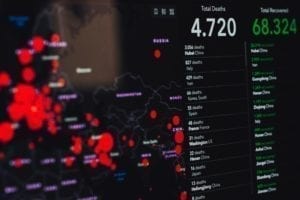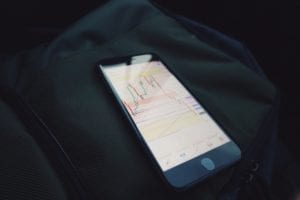This article was originally written and published by Openly Investing.
“Anyone in recovery knows that isolation is the biggest enemy.” – Ivan Moody
Ivan Moody’s quote is about his battle with alcoholism and recognition that the path to success is hardest when taken alone. I would liken his path to the one we need to take today and over the coming months in the restoration of economic fortunes, not just here but globally.
For years, investors have reveled in strong returns and growth in both capital and income. The party began in earnest after the end of the Global Financial Crisis (GFC) in 2009 and after 11 years this normality is being tested. This was always going to happen, with the only questions being when and why the party would either stop or be severely questioned.
As I write, we have seen some positive days from investments with investors attempting to look through the current malaise to the future. Without doubt, this is appropriate. Investors should always be looking ahead – down the road of time – to gauge where we may be economically in six to nine months, but I do not believe we should get ahead of ourselves at this time. That is not to say I am necessarily pessimistic but more that the recovery will take some time to come to fruition and there will almost certainly be stumbling blocks along the way. We are in uncharted waters with global economies closed or, as here in New Zealand, in the early stages of emerging.
The fiscal (government spending) and monetary (central bank) policies that have been brought to bear are truly staggering in size and dwarf those put in place during the GFC. These have included measures to preserve jobs through subsidised wages and enabled people to carry on their lives with minimal impact however, these policies cannot remain indefinitely, and their removal may be painful. Positively, the government announced that since moving the country to alert level 3, the economy has moved to a productive level of 75%. This may well be correct from a pre-crisis demand level, but I question whether current demand will allow this return to work to present itself meaningfully in near term profitability and economic growth. With that said, any return to normality remains hugely positive, regardless of the need to maintain physical distancing which creates bottlenecks to doing business. With the welcome announcement that New Zealand is moving to Alert Level 2, the positive momentum in the embryonic recovery will be bolstered yet further.
To me, the key going forward is unemployment and the level this reaches, not just here in New Zealand but also around the world. As I have said previously, employment is crucial in providing the ability of the consumer to keep the wheels of commerce turning through the ability to finance the necessities; debt – loans and credit cards, accommodation – mortgage and rent and food and energy etc. but these are the basics of the economy. For normality and economic prosperity, the consumer needs to feel comfortable enough to make discretionary purchases, or put differently, items of desire and this last part of the equation may take a little time to transpire.
Alongside collapsing credit and debit card transactions, anecdotal data suggests that the balance of revolving debt (credit cards) has been paid down during this period, despite online sales, which suggests a shift in mind set alongside an inability to shop.
Whether this is long lasting remains unclear, but this period of introverted necessity will no doubt have focused people’s attention on their ability to finance periods of instability in their lives and with it future purchases. In short, people may look to save more for the rainy day, further pushing out the recovery.
The potential for fallout from the epidemic and its effect on the world’s economies will continue to unfold but in the short term, I suspect the economic news will continue to make sober reading. This week, in New Zealand, the fires of uncertainty have been further fanned by the announcement from Air New Zealand that, in agreement with the Pilots Union, 25% of the airline’s 1,200 pilots will either be made redundant, or take early retirement, whilst the remaining 900 will take a 30% cut in salary. Of course, these actions are the result of a direct response to the fallout in tourism and the leisure industry in general being under pressure. Time will heal, but it will require a relaxation of border controls both here and abroad for this industry to be humming along again.
One of the emerging positives has been the response of different companies to the issues created by COVID-19. Early on, L’Oréal announced its intention to use some of it perfume manufacturing capacity to make hand sanitizer and industrial landlords have moved to support their tenants. This is not surprising, given delayed income from a surviving business is far better than attempting to acquire new tenants in competition with other facility managers and risk significant downward pressure on rents. The scale of this support has only really become apparent this week.
Brookfield Asset Management, a significant Canadian investor in infrastructure and shopping malls, announced that it is setting up a $5bn rescue fund to support distressed retailers. This new investment vehicle will provide support based on the attributes of the business and not on financial returns either. In part this will, of course, protect the company’s own customers, but it is not aimed solely at their own tenants. Such a move is welcome as well as needed and it is a prime example of how good can come from capital where there is a willingness to respond to a crisis at hand.
One of the continuing conundrums facing investors is that of the recovery in risk assets. Currently, good news appears to be good and perversely, there are instances where bad news is also perceived as good. This is not the first, nor will it be the last time we shall see this happen. Sometimes, bad news may be interpreted as good news as it may require additional monetary stimulus and even lower interest rates. This is important because when money is pumped into the financial system, and assuming it circulates through the economy, it is required to make a return. Typically, this requires it to be invested in a ‘real’ (physical) or a financial asset which may lift prices. Conversely, good news could suggest the opposite, that money will be taken away by the central banks, through rising interest rate policy. With the world in a synchronised recession, we may find ourselves at a point in time where – depending on severity – both good and bad news are good.
However, fixed income markets appear to be suggesting that risk assets are climbing a wall of worry and the rise of company prices may take a pause. In the United States, the announcement of an additional 3.2 million people filing for first-time unemployment benefits – bringing the total to more than 33 million – pushed yields on treasuries to lower levels than seen during the GFC. Whether this portends a move to negative interest rates, only time will tell, it is most certainly a situation that needs to be watched and one that central bankers will wish to avoid.
With the world’s economies under significant pressure and corporate profitability down significantly, companies will continue to mitigate the risks to their businesses by conserving cash. This may be achieved in a myriad of ways, through reducing or postponing capital expenditure, labour force reduction and of course the removal of dividend payments to shareholders. We have already seen the latter initiative here and abroad as an easy and quick decision to conserve cash balances. This action will clearly have a negative impact on income for investors, the extent of which remains uncertain, but with a fair wind behind us and the potential for the successful opening up of the economy and businesses it possible this may be short lived.
One other closely watched barometer of economic activity, the oil price, continues to suggest a slow and long burn economic recovery with demand down significantly from pre-crisis levels. But this barometer will take time to recover given supply continues to run at levels higher than demand and storage is awash with the black stuff and keeps pressure on prices. Oil prices, in conjunction with other factors, gives rise to questions regarding the outlook for inflation and the spectre of deflation. This is a common thread among investors, given the high correlation between oil prices and inflation. High inflation is bad for economies but deflation, or falling prices is also given inflation reduces the value of debt over time.
However, there is one question that seems to get little airplay at this time, what if there is hyperinflation down the road? One of the mechanisms for economic recovery that may be far faster than anticipated today, is the advent of a readily available vaccine. At the time of writing, experts suggest this may still be 12 to 18 months away but once available, it may represent a significant catalyst for the rapid normalisation of consumer behaviour and consumption. With supply chains still in disrepair and struggling to recover, a rapid increase in pent up demand may lead, given low supply of goods, to a rapid rise in prices people are willing to pay for items. Should this happen, it would challenge current central bank policy – low interest rates and quantitative easing (QE) – through the need to raise interest rates.
Inflation is a significant topic in its own right and almost certainly one of focus, but I shall leave it here for another day.
With many unanswered questions requiring the passage of time to crystallise we will almost certainly see additional volatility in investments over the weeks and months ahead. As such, we should expect the path to normality to be bumpy and see both good and bad days in asset prices especially after 11 years of ‘bull’ markets and steadily rising prices. It may be reasonable to expect a period of muted asset returns and this in and of itself a positive.
Investing is a long-term endeavour and the good times will come again, of that we should be certain, but at the moment, the unseen enemy of commerce has left the horizon a little blurred.
With uncertainty, opportunity knocks, and we shall continue to hunt for those investments that present good quality, long-term investment opportunities that will drive both capital and income over time.
Stay the course.
Tim Chesterfield
Chief Investment Officer
Openly Investing Limited. 6 April 2020
DISCLAIMER
This document is provided for general information purposes only. The information is given in good faith and has been prepared from published information and other sources believed to be reliable, accurate and complete at the time of preparation, but its accuracy and completeness is not guaranteed. Information and any analysis, opinions or views contained herein reflect a judgement at the date of publication and are subject to change without notice. To the extent that any such information, analysis, opinions or views constitute advice, they do not take into account any person’s particular financial situation or goals and, accordingly, do not constitute personalised advice under the Financial Advisers Act 2008, nor do they constitute advice of a legal, tax, accounting or other nature to any persons. To the maximum extent permitted by law, no liability or responsibility is accepted for any loss or damage, direct or consequential, arising from or in connection with this policy or its contents.

18 March | COVID-19 & Global Economy Update #3
The COVID-19 pandemic continues to impact the global economy more significantly than anyone had first expected. Read the 3rd update on global markets from Openly Investing here.

12 March | Crude Oil & COVID-19 Update #2
Crude Oil Continues To Be Impacted By Covid-19 As The Pandemic Continues. Read The Second Update From Openly Investing Ltd.

10 March | Global Economy and COVID-19 Update #1
The first update from Openly Investing Ltd regarding the impact of COVID 19 on global economy








